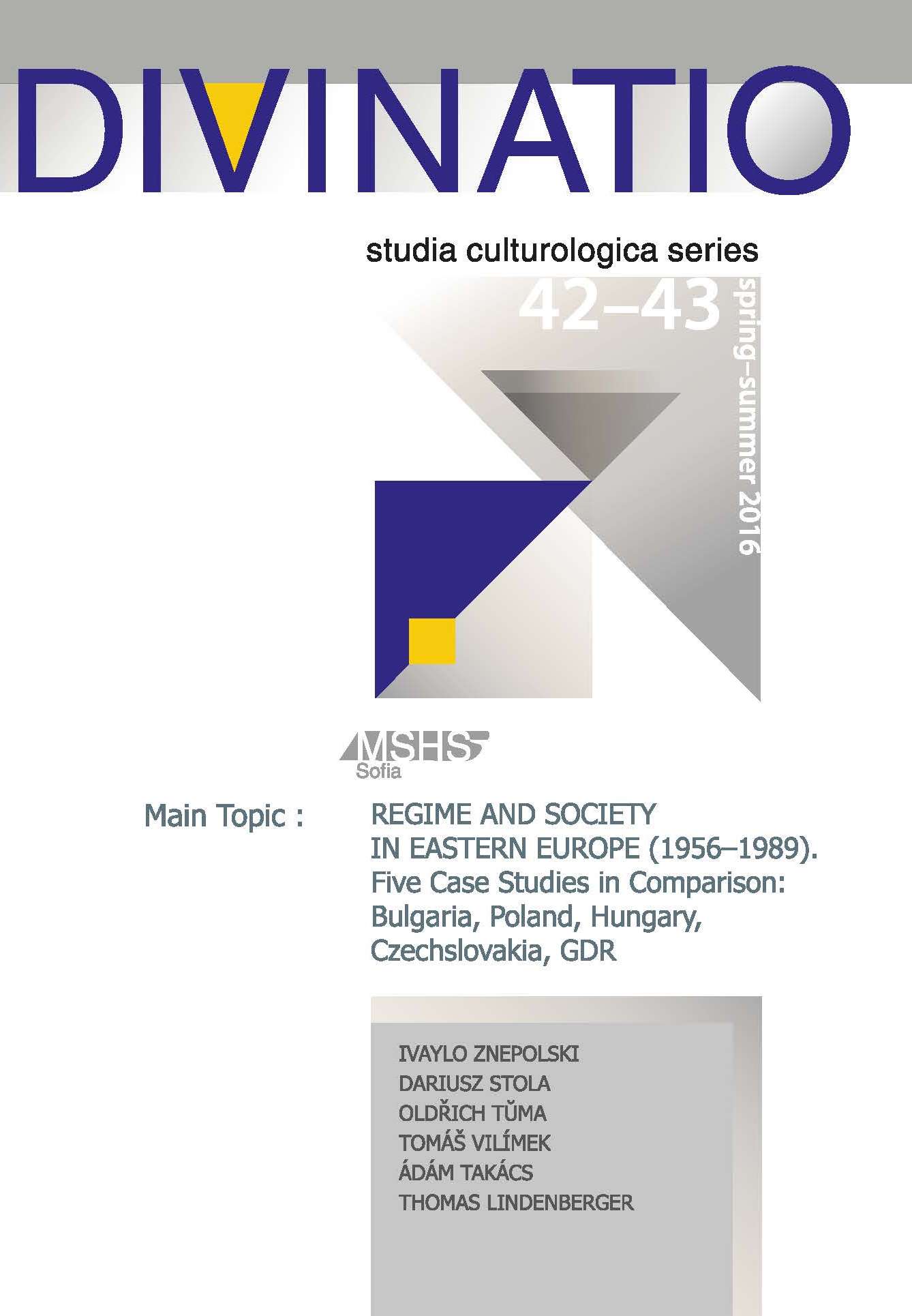
We kindly inform you that, as long as the subject affiliation of our 300.000+ articles is in progress, you might get unsufficient or no results on your third level or second level search. In this case, please broaden your search criteria.




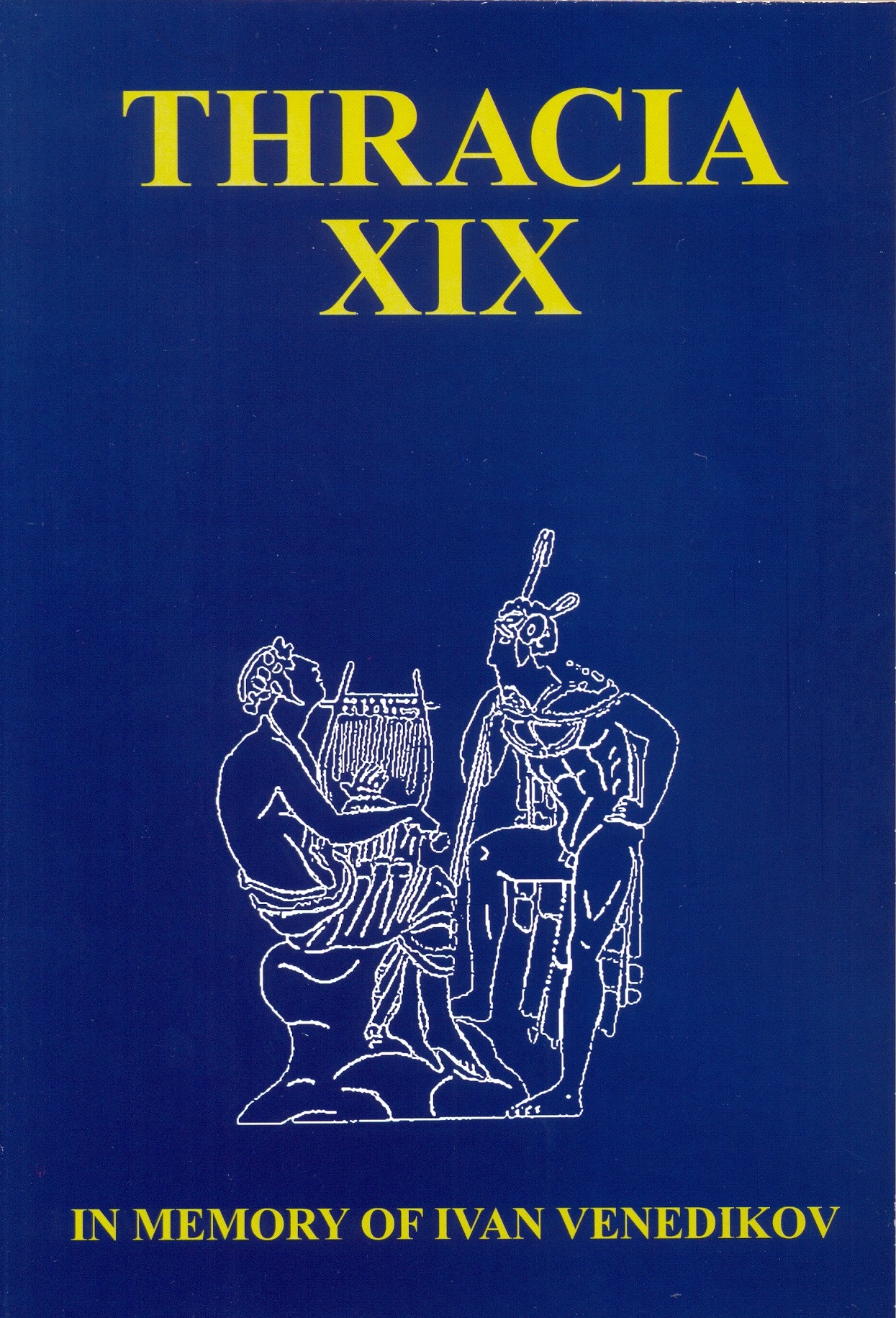
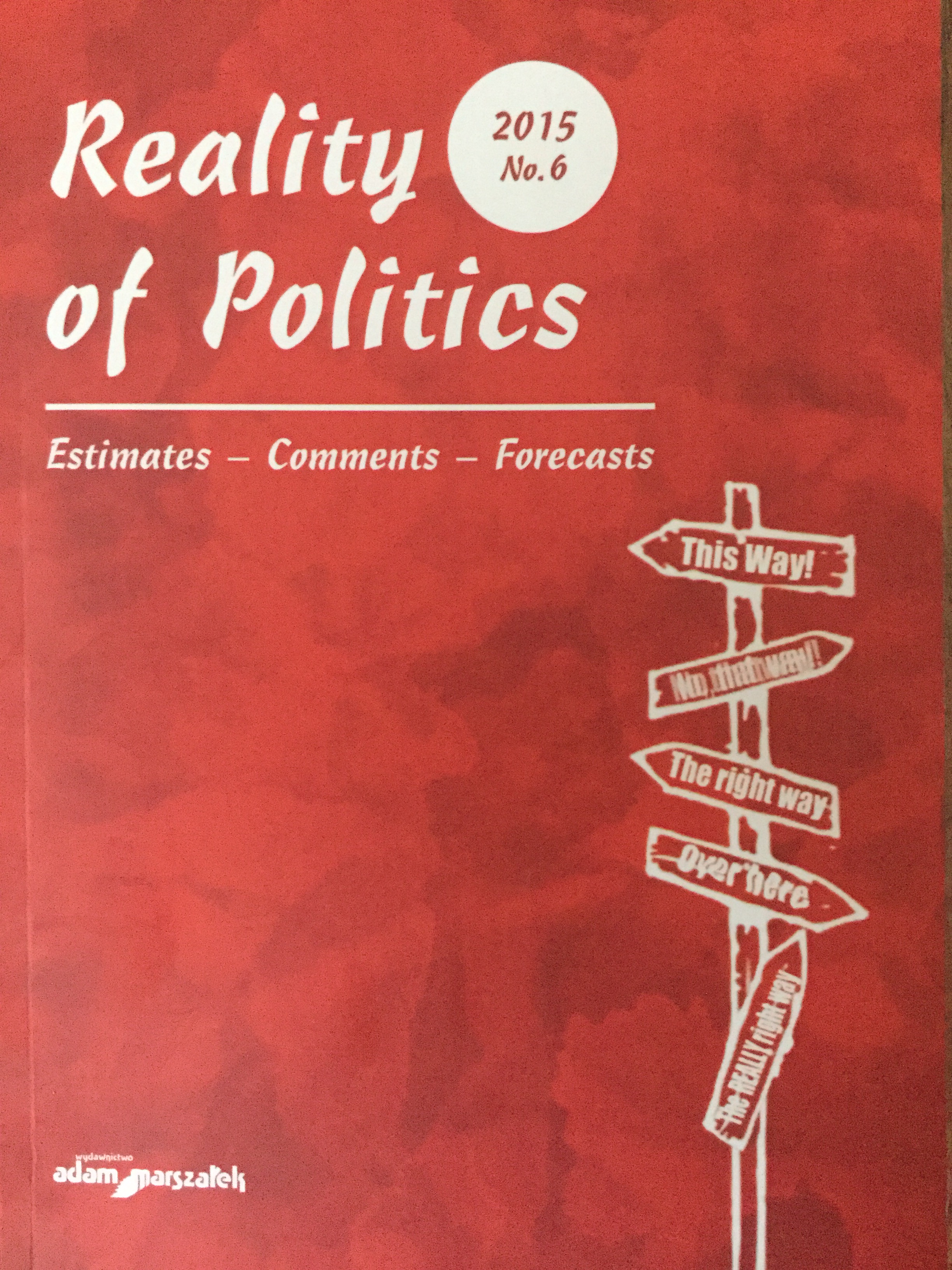
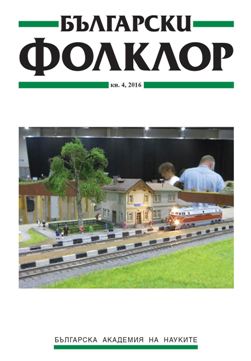
The gradual joining of the post-socialist states to the European Union turned out to be a long and comparatively difficult process. The inclusion of these states in the structures of the Union is not just a political, economic and juridical act, but also an act containing cultural dimensions. It is important to know the historically determined social and cultural specifics of these states and to evaluate the possible impact resulting from them in order to understand and analyze the specific route of development of the post-socialist societies within the European Union. The present article aims at the revealing of some of these peculiarities present at the level of the everyday culture and stemming from the social logic of everyday life. They are integral elements of the cultural system and of the identity, being at the same time not constant and, as the practice shows, liable to change under certain conditions. The text analyzes the apprehension and the attitudes to the private and public sphere, the ways to build trust and social capital, as well as the role and the meaning of the informal nets of relations in the post-socialist societies. It also follows the changes in the mentioned above cultural characteristics after 1989 and studies the reasons for the dissimilarities in the processes of change in the different states.
More...
The article discusses the morphology of Otherness in the Bulgarian meta-narrative in regards to the empirical case connected to the concept of the Tatars in the minds of Bulgarians in the late 18th and in the 19th century. Тhe text analyses the Tatar topoi in the Bulgarian folk songs, in historiography and in 19th century Bulgarian literature. The Bulgarian national narrative enriches the morphology of Otherness by incorporating heterogeneous Tatar images as variants of stereotypical notions of the abductor. Some mythologems associated with archaic layers of human culture and forming a folklore-mythological matrix of understanding foreignness are recreated. According to the the data from the Bulgarian folk songs, there is no independent Tatar subject, the Tatar topoi are incorporated secondarily into the song motifs, connected with abduction. These are heterogeneous elements, whose primary objective is to maintain a “sense of history”. Such mythologized images were present in written texts in the late 18th and in 19th century thus supporting the Bulgarian “great narrative” that legitimized the preliminary design for the creation of the nation. Since the middle of the 19th century due to the empirical experience of direct communication Tatar emigrants have gradually been discovered in their natural human form while their activities have left durable traces in the local memory and heritage of the region.
More...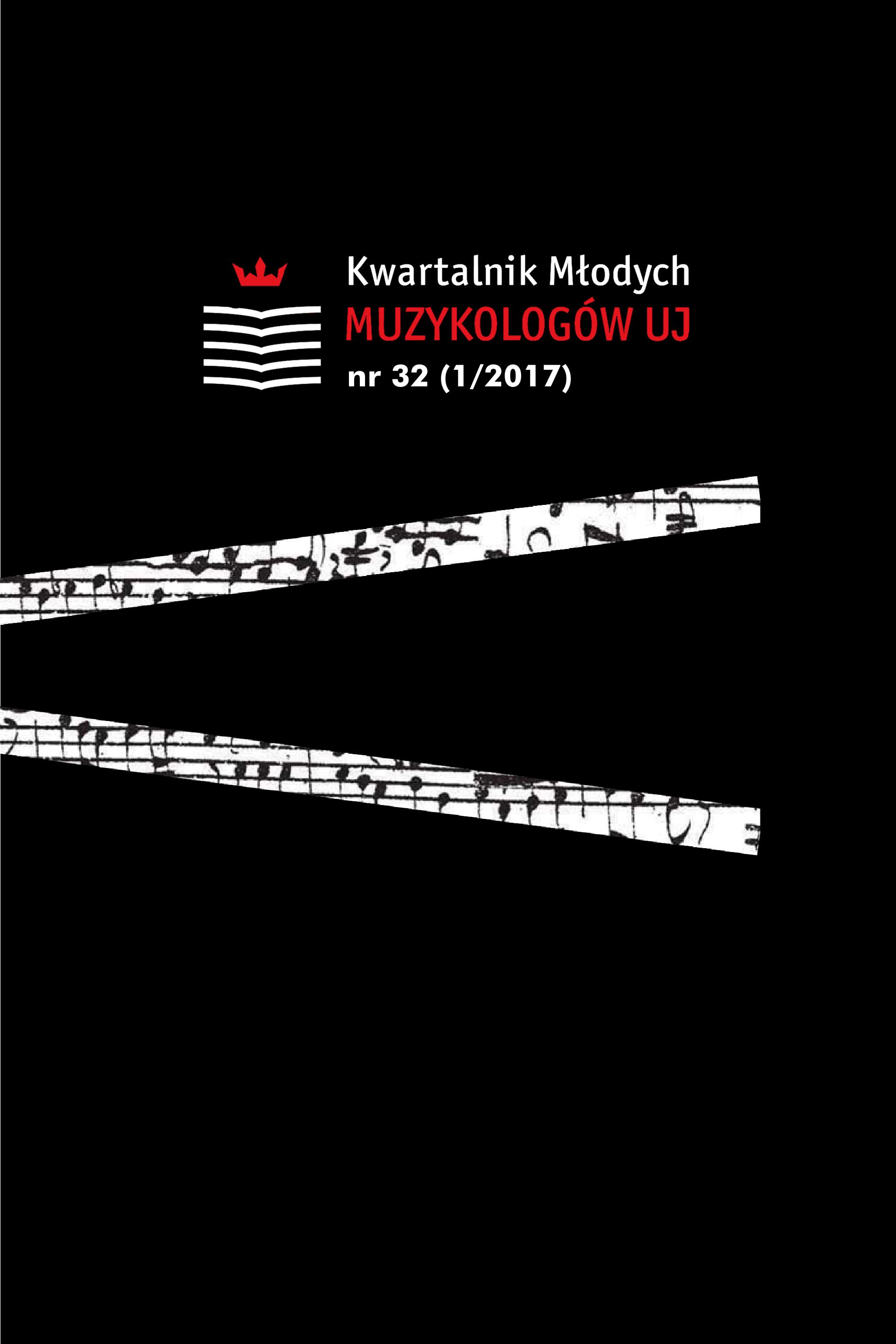
The article is a pioneer attempt in Polish literature to develop a syn- thetic resume and the characteristics of the work of the Italian Baroque composer Leone Leoni. Leoni was highly valued in his time; also, he is said to be one of the creators of dramma per musica genre, and his religious compositions served as model examples of counterpoint for many centuries. e rst part of the text presents the state of research concerning the life and work of the artist; then, the second part con- tains his biography. e last part discusses Leoni’s works. Finally, the rank of his output is regarded.
More...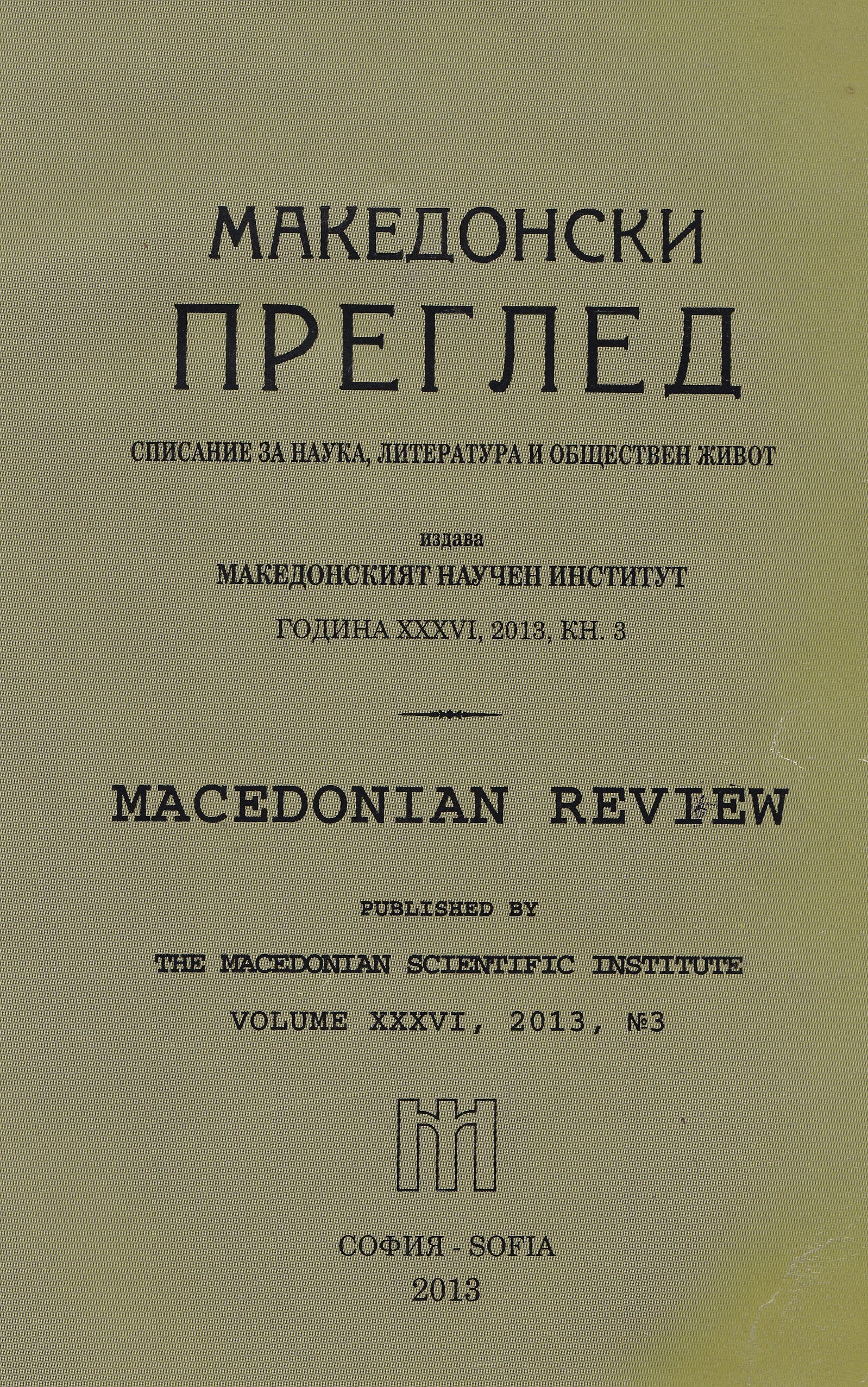
The Republic of Macedonia exists on the European political map for more than two decades. For this not short time period, very few things in the young country have changed.
More...
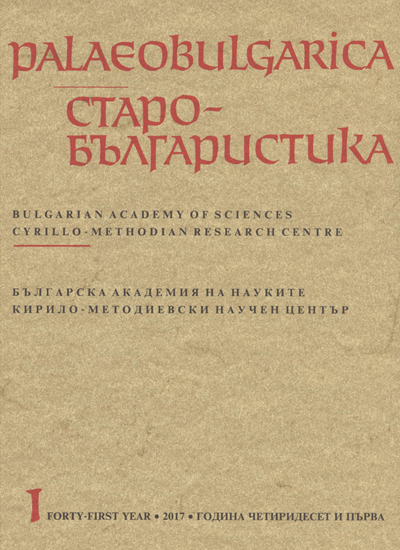
The notes on Maria Lekapene, the granddaughter of the Byzantine Emperor Romanos I Lekapenos and on her husband, Peter of Bulgaria are to be found in several medieval Russian historiographical texts: in the Russian Primary Chronicle, in the second edition of the Hellenic and Roman Chroni¬cle from the first half of the 15th century and in two related compilations of the sixteenth century, i.e. the Russian Chronograph of 1512 and the Nikon Chronicle. There is no doubt, that Old Russian authors derived information primarily from the Old Bulgarian translation of the B-edition of the Georgius Monachus Continuatus. In Old Russian texts we can find dependencies on the chronicles of John Zonaras and Constantine Manasses (known in their Slavic translation) as well as the elements taken from the medieval Bulgarian sources (glosses to the text of the chronicle of Constantine Manasses and the lives of St. John of Rila).
More...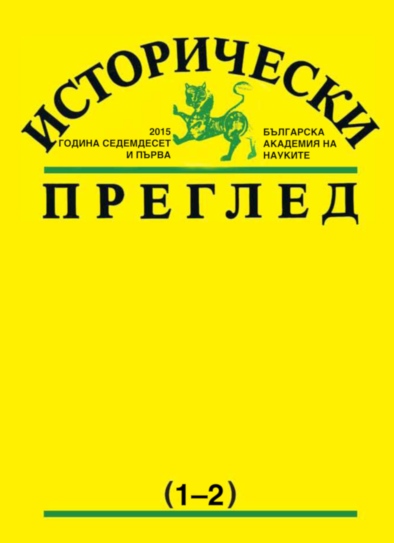
The article traces the multifaceted activity of prof. M. Drinov as a public figure and scientist to legitimize Sofia as the capital of Bulgaria. The emphasis is on revealing the sound scientific justification of Drinov’s idea. “The Sofia line” in his writings is traced in all his works where he argues that it is Sofia that is the geographical, historical, spiritual, cultural and social center of Bulgaria.
More...
Marin Drinov took an interest in the educational movement of the Bulgarians in Vardar Macedonia in 1876. Then he published folk songs, created in the region of Debar. Drinov took up this position because he wanted to study the folklore of the Bulgarians in Macedonia. On the other hand he used this to fight against the falsification of the Bulgarian language in Serbia. Drinov collected the songs at Galichnik – the village where archimandrite Partenie Zografski was born. This Bulgarian cleric took part in the church movement in Macedonia. Archimandrite Partenie also studied the Bulgarian Macedonian dialect. He supported the existence of this dialect. On the other hand Drinov chose Galichnik because this region attracted Russia’s attention on the Bulgarian Church Question in Macedonia. In conclusion one may say that Drinov also wanted to make a study of the Bulgarian Macedonian dialect. Thus he defended the Bulgarian church educational movement in Vardar Macedonia.
More...
Marin Drinov was one of the first Bulgarian scientists that continues and enriches the tradition born during the Bulgarian national revival of developing the Bulgarian literary language by analyzing it on a broad scientific basis and at the level of the philological scientific thought of his time. What impresses in his concept on the Bulgarian literary language was his ability to summarize and analyze vast factual material, and with a brief expression to characterize the multidimensional and complex linguistic phenomena and processes. The scientist and educator in practice took a lot of care and effort to make the correct device of our speech and of unified spelling. The philological studies of Marin Drinov were precious and they were a part of the new Bulgarian language history. They were directly related to those processes and phenomena that led to the realization of the necessity of a unified standardized and codified language system which represented and defined the literary language characteristics of the nation.
More...
The article represents some of the most famous Slavic manuscripts from the collection of the National Library “St. st. Cyril and Methodius”, received in the early twentieth century, acquired from the archive and the personal library of Professor Marin Drinov, leading Bulgarian scientist researching Bulgarian and South Slavic literature, history and culture and one of the leading lecturers in Kharkov University in Bulgarian history and literature. The author also briefly discusses some of M. Drinov’s papers related to various historical and philological projects on original texts of old Bulgarian literature as well as some written by famous Byzantine writers.
More...
One of the first projects of the Science Archive at the Bulgarian Academy of Sciences is the “Digital Archive Marin Drinov” (http://www.math.bas.bg/digi/drinov/archiv.html). It was realized in cooperation with the department of Applied Information Technologies in the Humanities at the Institute of Mathematics and Computer Science, Bulgarian Academy of Sciences. The project began back in 2006 with the scanning of 24 archival units (176 facsimiles of manuscripts, 14 printings and 15 black and white photos) from fond № 104K of the Science Archive. It is worth mentioning that the digitalization of a personal archival fond is the first of its kind in Bulgaria with respect to the technological, methodological, and classification merits of the digitalized information. The future plans of the team that undertook this project are closely related to the systematic updating of published information, in terms of quantity and thematic content, with documents reflecting the life and work of M. Drinov which are kept in the fonds of the Science Archive. This project is still viable in 2014, a year marking the 145th anniversary of the Bulgarian Literary Society (now the Bulgarian Academy of Sciences.)
More...
The article examines the will (1867) of the Bulgarian donor Kozma Trichkov, who was born in Vratsa, but capitalized on business in the Danubian principalities in the first half and the middle of the nineteenth century. Based on extensive documentary material the author traces in detail all actions of the Bulgarian Band of Virtues in the implementation of the will notably in that part which concerns public affairs and initiatives – enlightenment and social charity. The author finds the young people who studied in local and foreign educational institutions with financial support from K. Trichkov’s donations. She traces the movement of money – interest from capital and real estate intended for maintenance of Vratsa schools. A. Kirilova also pays special attention to the changes that occurred in the work on the implementation of the will after the restoration of the Bulgarian state (1878) and especially after the death of E. Georgiev (1897) and the dissolution of the Band of Virtues (1901), when the powers on the implementation of the donor’s will were gradually transmitted from the Band into the hands of state institutions.
More...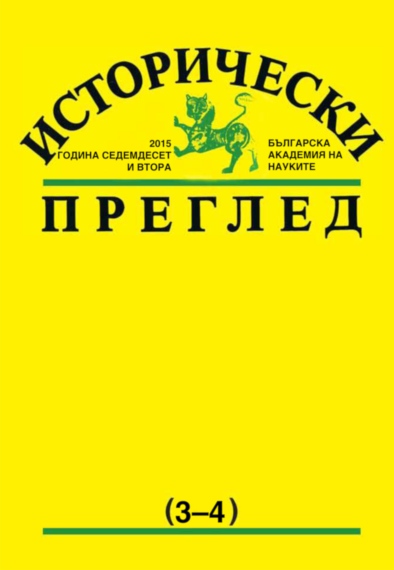
The relations between Christians and Muslims and between their social structures in Vidin in the 18th century are in the focus of the study and its cornerstone is a key Ottoman document from 1719. The case leads to the consequences of the war between the Ottomans and the Holy League (1683–1699), the devastation of Vidin and radical change of its urban structure, accompanied by a reallocation of the population. Vidin once again became part of the military border (“serhad“), the Ottomans finished building a new fortress around the city in about 1722. The soldiers there were Janissaries. They sent to the Porte a statement asking the government to make the Christians sell their properties and move out of the fortress. The argument is that everybody has to comply with the requirements of the law of the military border “kanun-i serhad“ and it does not allow Christians to remain in the fortress; the houses of the Christian Raya must be sold without violence through an auction organized by the kadi court of military officers from the garrisons and other Muslims. Then the article focuses on the main issues examined on the base of Ottoman documents and in comparison with the situation in other towns in today’s Bulgarian lands: the impact that the events of the late seventeenth century and the first quarter of the eighteenth century had on the urban planning of Vidin and the distribution of the confessional groups in it; basic social personages, related to the case; Varosh as intra-urban toponym, but also as an institution intermediary between the Ottoman Empire and the Christian citizenship in Vidin; the acute „fight“ for the possession of the land in Vidin and its region; possible interpretations of the phrase „kanun-i serhad“ and legal administrative practices it stood for. The study of these issues will allow us to reveal the mutual influence between the location of the 18th century Ottoman Vidin on the border of the empire and its urban, confessional, and social structure.
More...